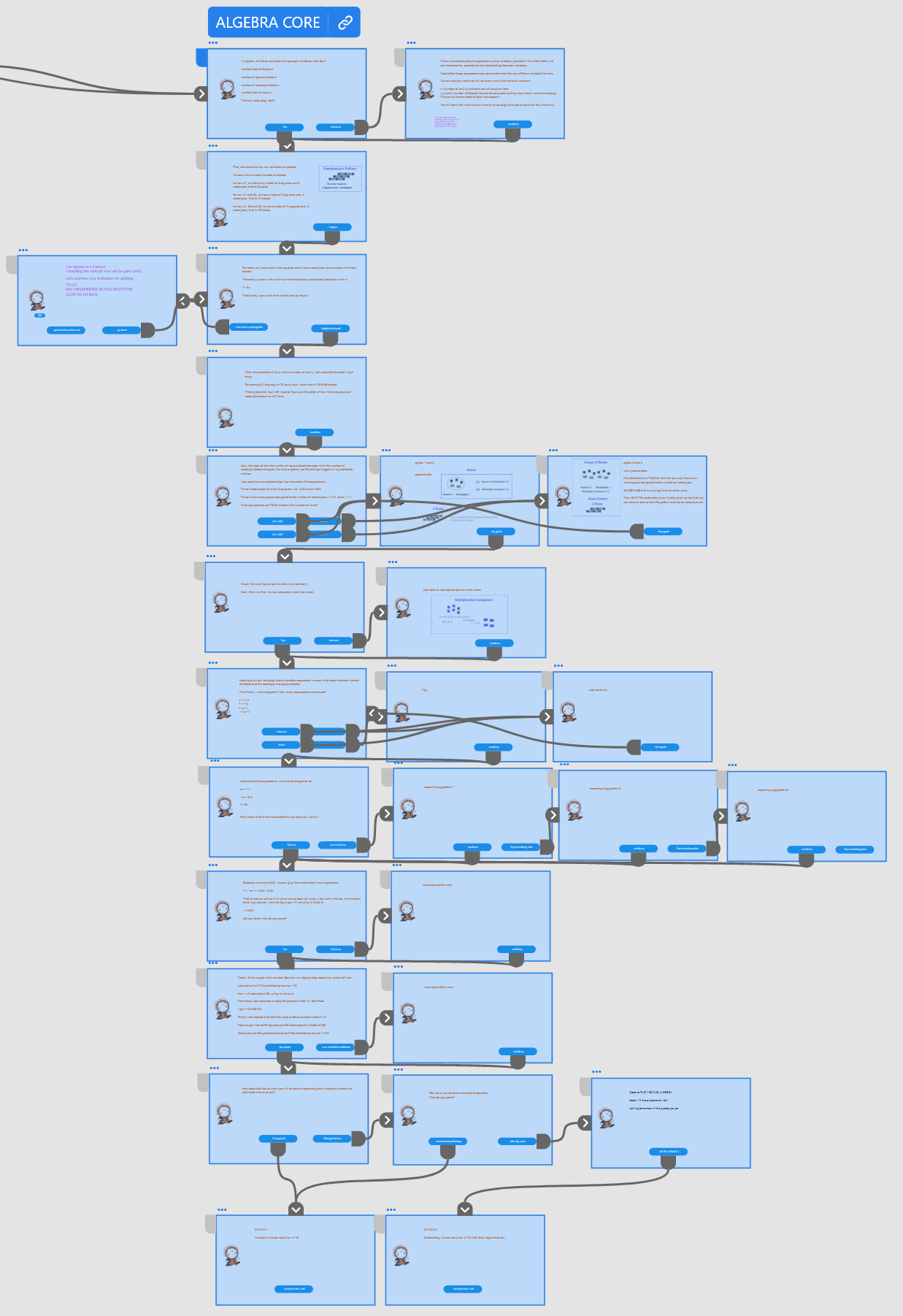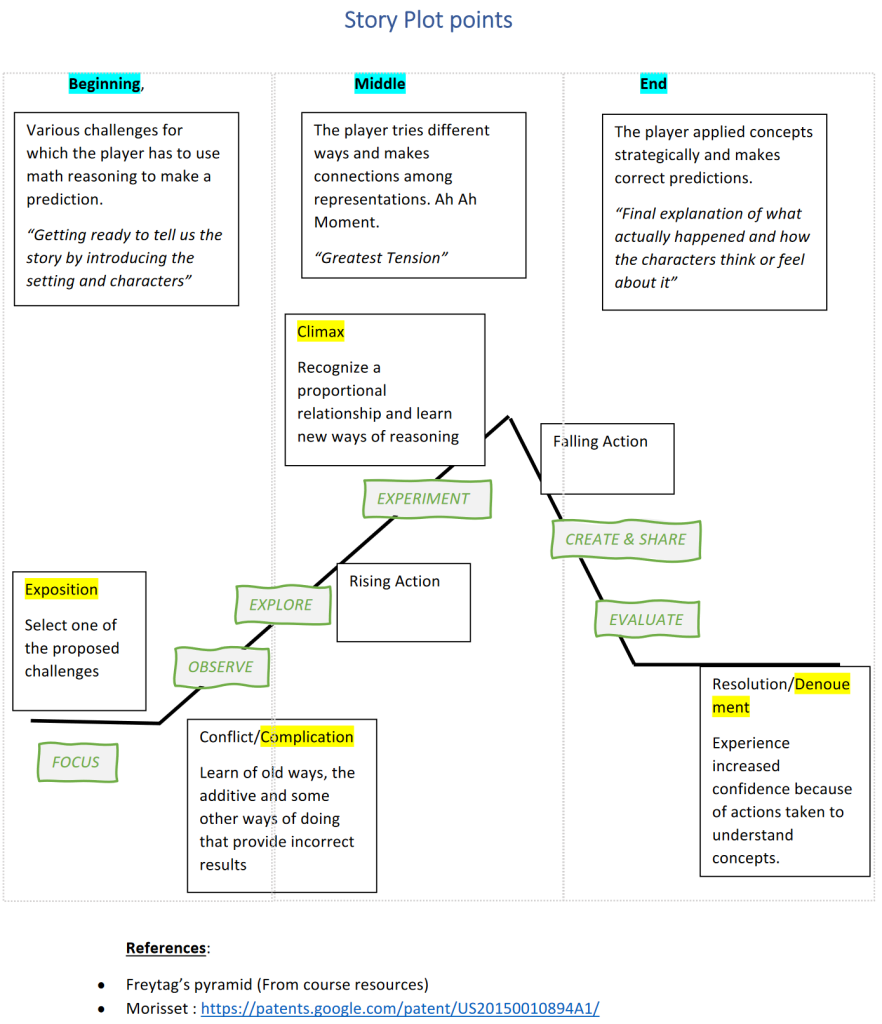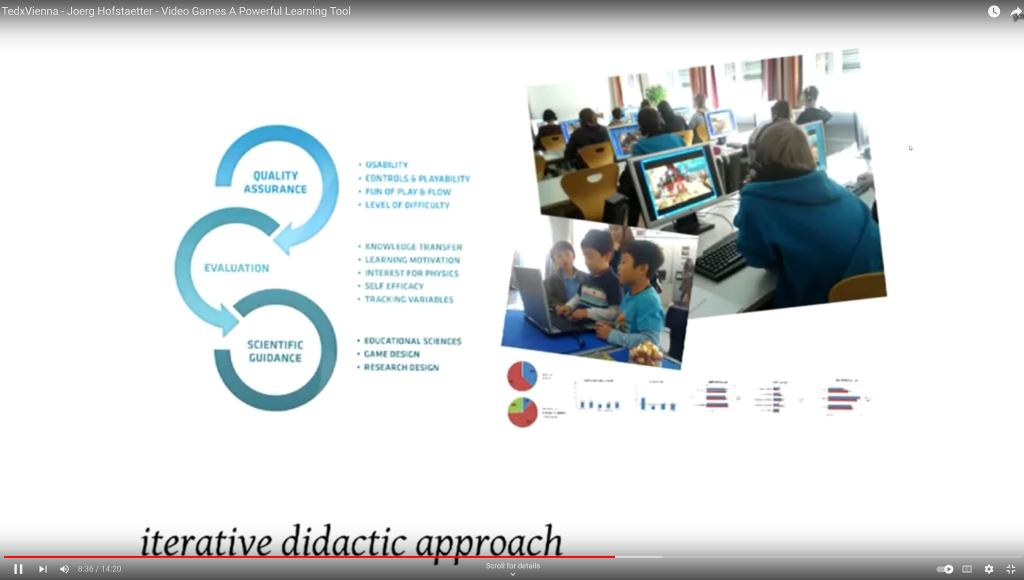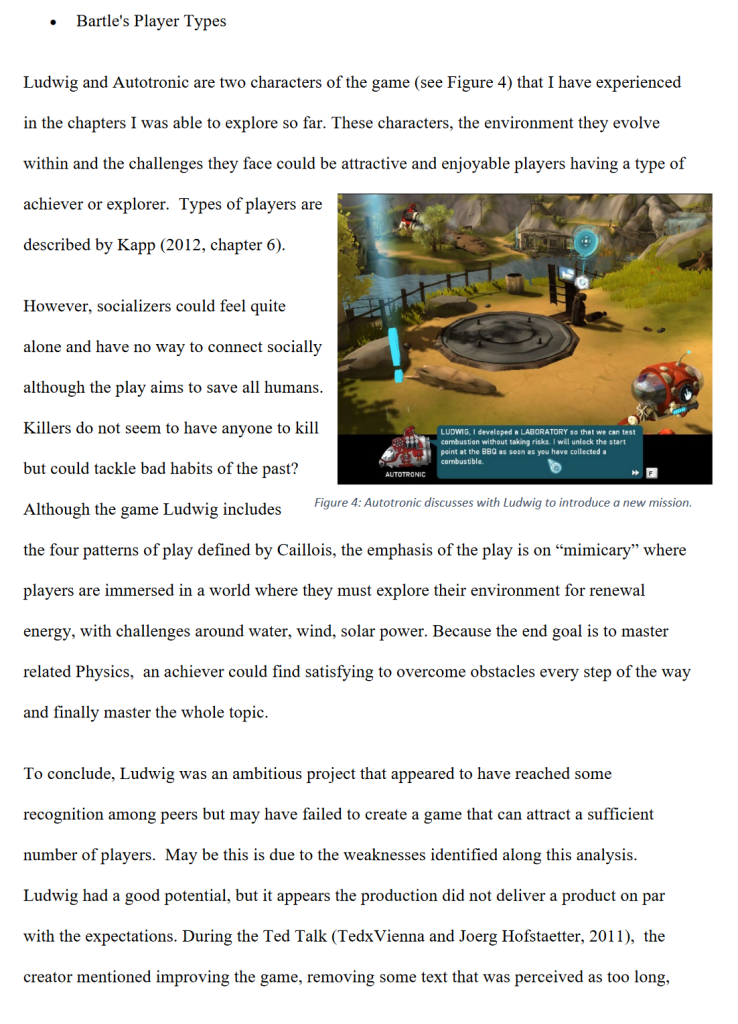Process for gamestorming and designing a story for learning
What worked best; what didn’t?
- I kept the Freytag pyramid in mind to have a clear progression toward a climax, and then some falling actions as the play progressed to the “denouement.”
- When I started, I envisioned an entire game, but it was too much to handle, and I narrowed my design to just one part focusing on only one problem to solve. I could not use Math prerequisites and had to develop the entire reasoning, but I think that is an excellent benefit for the player and makes this part autonomous.
If you had to do this process over again, what would you change? If nothing, why not?
- I liked that we were encouraged to see this design as an iterative process, so I started to feel confident that whatever departure point I could use, I would end up featuring everything I’d like to see in my game. Also, I have reworked this game three times and can see it maturing and getting better. Even though I felt at the beginning that redoing was not the best use of my creativity and time, I realized I was getting more creative and had a better sense of what was required to complete this story. It is much more work than I had anticipated.
Describe your short story narrative game idea (you can copy this from what you included in the Discussion Board or change it up):
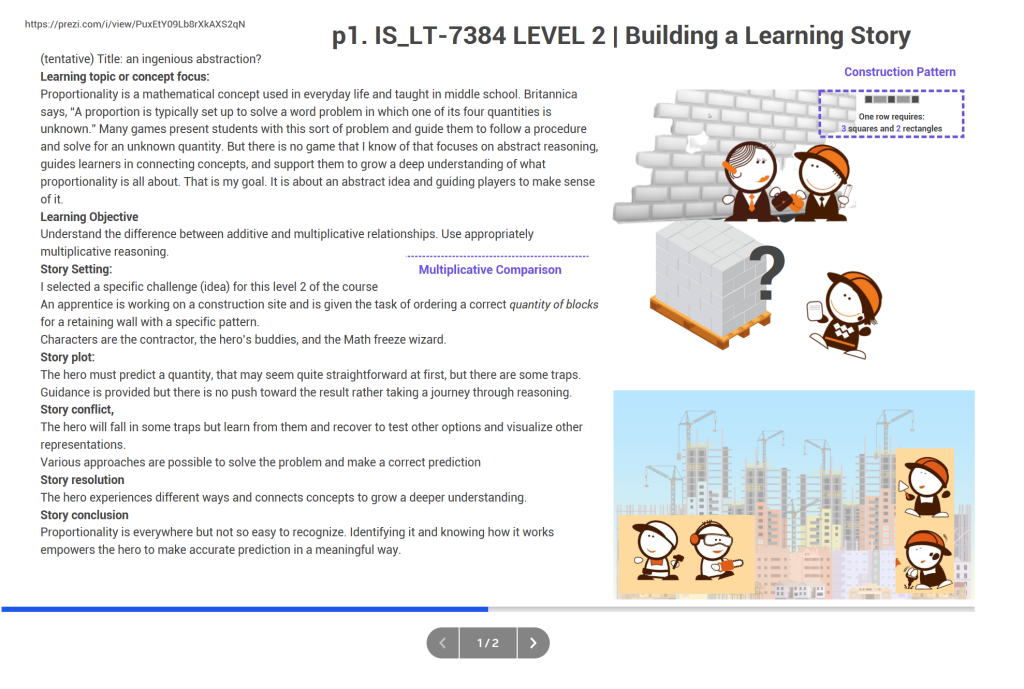
building learning story 1
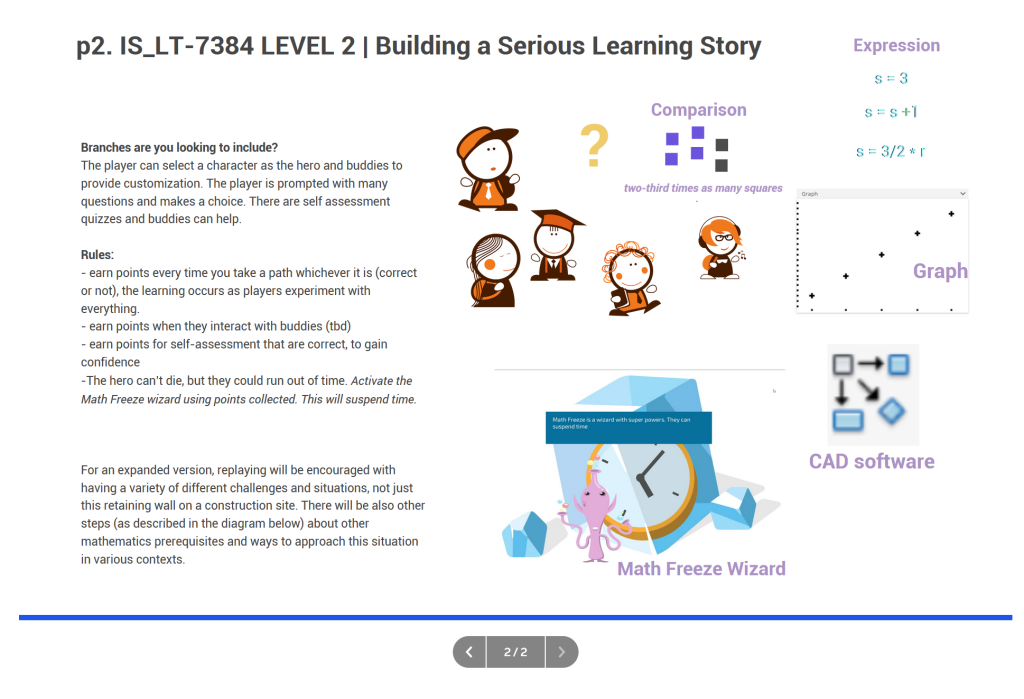
building learning story 2
What feedback did you receive from your peers? (summarize main points from the Discussion Board)
From James:
I tried to introduce the problem with a narrative that is as realistic as possible, although simplified, as suggested in our readings. I introduced one branching where the player can earn more points as they read the contractor’s mind. See below:

shot-xd-links-level2-branching
From Danielle:
I reworked my exposition (beginning), adding more complexity:
Time-sensitive action integrated with the story: construction must start the same day due to the risk of a late work penalty. All blocks must be ordered before 10:00 am.
This will add realistic project management issues in a construction setting where strict deadlines and team interdependencies can impact your work day unexpectedly. Then, the player only has 20 minutes to prepare to develop a math model and is ready to react quickly to the final data coming with the expected phone call. During the middle part of the story, there will be an option to buy more time or get time suspended. It will give more tile for learners to study toward the learning objectives.
Link to the improved redesigned exposition flow:
https://xd.adobe.com/view/2ae34a9c-e393-48e1-a87a-61a8ec678f1d-7fb0/?fullscreen
Reflect on what you have been working on in this level as you work towards wrapping it up to submit:
I realized I had not completed an abstract Math narrative yet from beginning to the end as I was too busy branching and creating alternative paths. I designed the story and I took 8 crowded screens, I reworked it a few times already to lighten screens and create some choices and it is approaching the limit of 20 screens already.
Algebra solving flow:
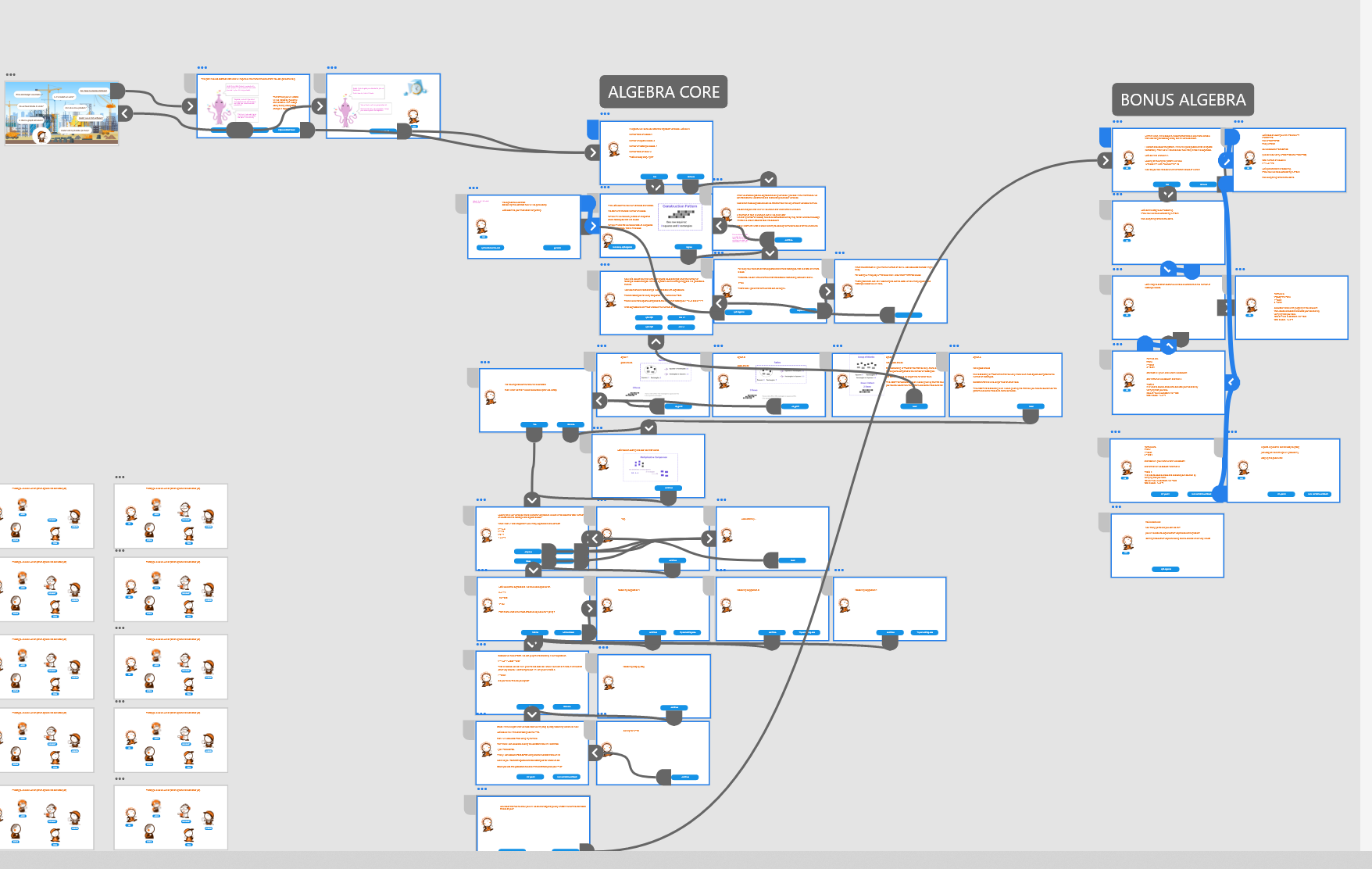
XD design prototype for algebra
Screenshot of my current XD design. It is getting there!! It gives me a sense of how large my project is already. But it can not be smaller if I want to make it work.
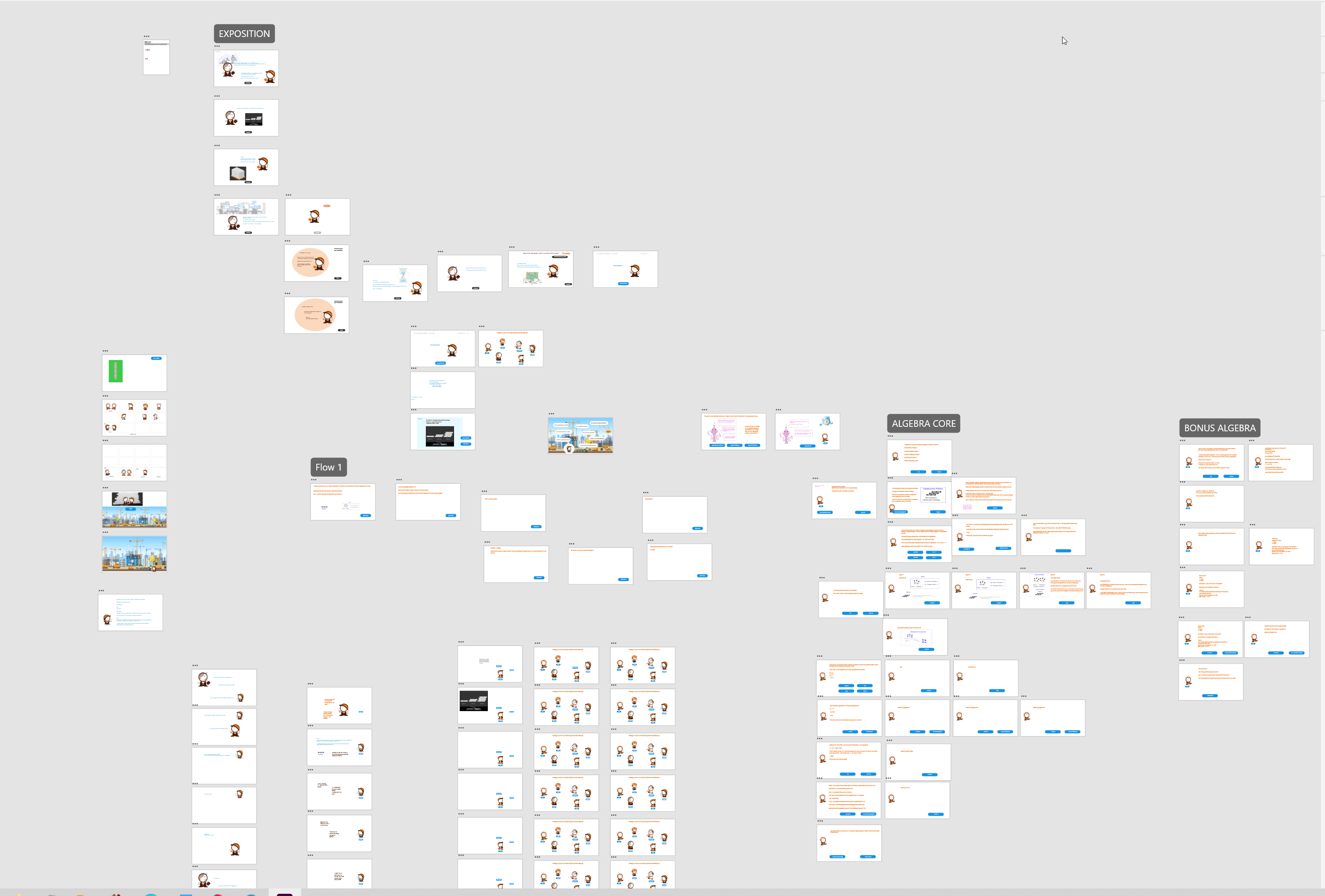
entire XD design as of now
